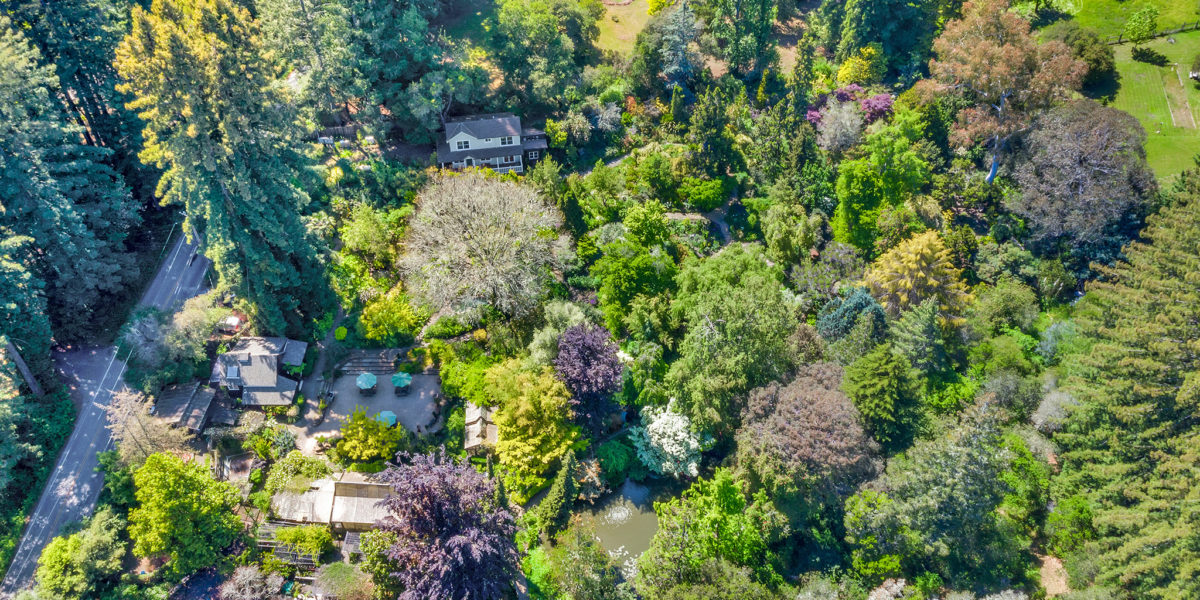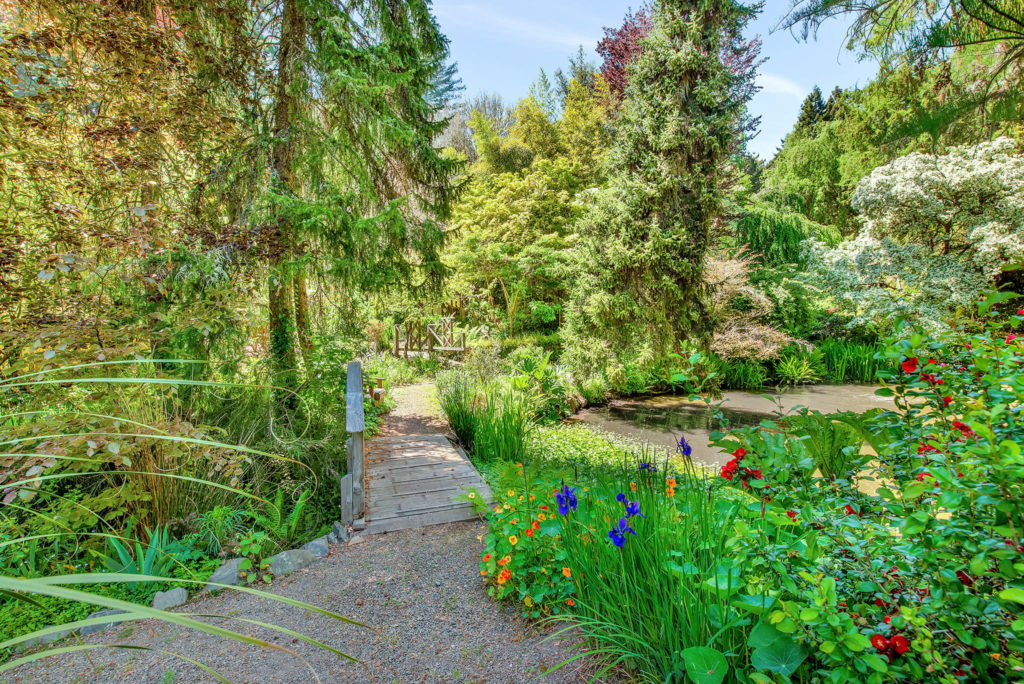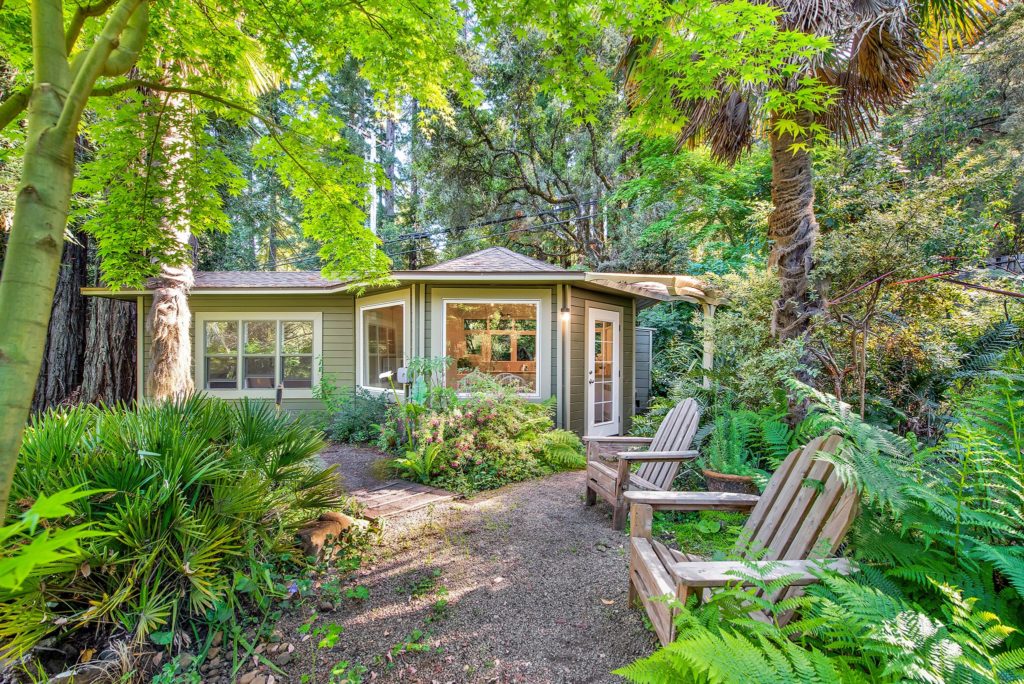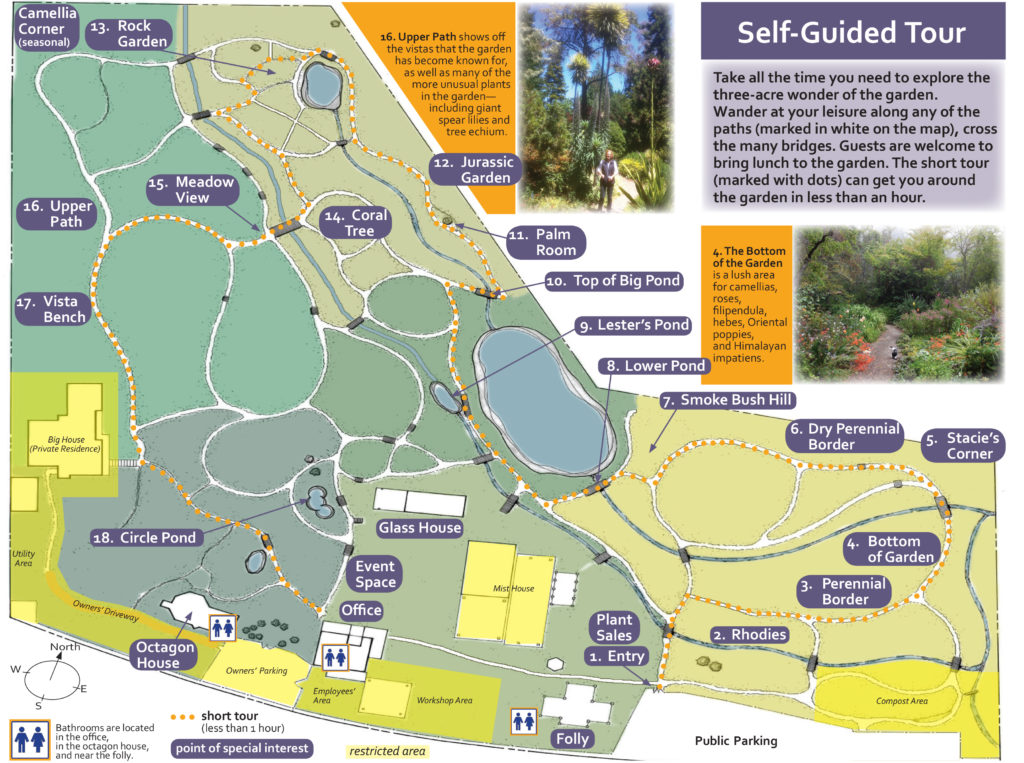
An Iconic Garden Is for Sale: Why I Dream of Buying This California Landmark
Prepare to fall in lust: Western Hills is a world-famous garden that is a mecca for landscapers, gardeners, and horticulturalists.

The moment I saw the real estate listing for a charming two-bedroom house on a 3-acre property that happens to be home to the acclaimed Western Hills garden in Occidental, California, I started fantasizing about uprooting my life and changing, well, everything. After all, Western Hills has a historically influential plant collection, along with a barn studio, a greenhouse, a commons area, four ponds, and a propagation house. It’s also gobsmackingly beautiful—of course, you need only to watch the drone tour below to know that. But Western Hills is more than a garden; it’s the embodiment of an emblematic story about two men who escaped city life to seek solace from political strife and judgment over six decades ago, much in the way I sometimes wish I could escape the city today.
The story starts in 1959. Lester Hawkins and Marshall Olbrich, who met in Berkeley in the ’50s, held socialist ideals—the kind that Bernie would likely approve of. They were appalled by McCarthyism and consumerism, so, like other early adopters of the back-to-the-land movement of the ’60s and ’70s, they left San Francisco for a hilly slice of pastureland that, while encircled by redwoods, had a boggy meadow and was overrun with poison oak and blackberries. Undaunted, the couple began pulling the poison oak and digging ditches. They added a home, two barns, and started planting vegetables in what Olbrich once told The New York Times was their “obligatory organic homestead phase.”
Soon, however, the couple became passionate about ornamental plants, importing varieties that are now essential to gardening in the West. According to Pacific Horticulture, a nonprofit West Coast gardening website and magazine where Hawkins was once a contributor, the pair were inspired by the San Francisco Botanical Garden, and “began replacing the homestead’s edible plants with an exotic palette of Australian, Chilean, and South African trees and perennials.”
Although they had no formal training, Hawkins soon emerged as a garden designer with a naturalist bent, while Olbrich became a ground-breaking plant hunter with an eye for rare-at-the-time cultivars that he brought to California, way before you could order such things online.

Brian McCloud Photography
The resulting collection was so pioneering, in fact, that famed plant collector Dan Hinkley, the creator of the iconic garden at Windcliff in Washington, says the garden—and the nursery Olbrich and Hawkins ran there—forever changed the perception of what an American garden should and could look like.
“Western Hills Nursery was seminal in the birth of plants-manship in North America and the birthing of our national horticultural identity,” Hinkley says. “Yearly pilgrimages to Marshall and Lester’s mecca happened from keen gardeners across North America starving for the rarities readily seen in gardens of Europe.”
Hinkley adds that he still has numerous plants he bought from Western Hills at Windcliff, many of them prominently placed. “[The plants] remind me on a daily basis of the impact the nursery had on gardens across the country,” he says.

Famous for its plant collection, Western Hills features camellias, confiers, dogwoods, ferns, hellebores, irises, endangered Chinese maples, Puyas, rhododendrons, and perennial flowering shrubs.
Brian McCloud Photography
In addition to changing the gardening world forever, Western Hills also sounds like it was a lot of fun. Convivial late-night dinners for landscape designers were held, during which, landscaper Betsy Flack once said, Hawkins held court on topics like economics, politics, literature, philosophy, and art. Landscaper Chris Rosmini wrote in Pacific Horticulture that the gardens were a chance to escape the complications of modern life and “believe that perhaps we too could create good gardens and live lives we chose.”

Brian McCloud Photography
So now let us return to my fantasy of escaping to Western Hills, which has just come under contract. (Inspections and sale are still pending.) As it was during the civil unrest of the ’60s, I think it’s safe to say these are not easy times. Which is why I believe gardening—in many forms, including vegetable gardens, houseplants, homesteading, collecting, and landscaping—has exploded back into the public consciousness because we are once again being pulled back to the land.
Case in point: Black Sanctuary Gardens is creating a series of garden spaces for Black women and communities in and around Oakland because “feeding the soul helps to feed the fight for justice.” Meanwhile, Los Angeles artist Fritz Haeg’s Salmon Creek Farm, self-described as “a sort of queer commune-farm-homestead-sanctuary-school hybrid” in Albion, California, is another example of the drive to turn to nature for refuge.

Brian McCloud Photography
“I think [going back to the land] is always going to happen, but maybe there’s a feeling of a critical mass right now, a feeling of a movement,” Haeg tells me. “This idea of stepping away from systems you don’t believe in, or may not even feel safe in, and creating something that embodies your values and how you want to live, we’re in a cycle like that.”
Haeg adds that he is struck by the fact that Hawkins and Olbrich left San Francisco for what would become Western Hills a full decade before hippies fled cities for communes. “The late ’60s was a time when young college graduates were reconsidering their relationship to a growing commercial culture, the rise of gay liberation and civil rights,” he says. As an example, he points to Scottish artist Ian Hamilton Finlay, who bought a farm in the Pentland Hills in the mid-sixties and spent the rest of his life turning it into a poetry and sculpture garden called Little Sparta. “Certain gardens,” Finlay once told a friend, “are described as retreats, when they are really attacks.” Translation: Devoting one’s life to a single piece of land can be a revolutionary act.
Haeg points out, however, that the last time we had the collective urge to harvest revolution on a small farm, students weren’t saddled with student loans and the cost of buying land were very different. He’s not wrong. Western HIlls was bought for $2800 in 1959. Now it’s priced at about $1.8 million. “Young people have to be more creative now,” he allows.

Brian McCloud Photography
Of course, the barrier to buying a place like Western Hills goes beyond economics. As a historic garden with deep community ties, it needs a serious steward. The gardens already fell into serious disrepair and forclosure in 2010, only to be rehabilitated by the current owners, Christine and Tim Szybalski, who are selling to move to Hawaii so they can be closer to their grandchildren.
“The gardens were in very bad shape when they purchased,” says Doug Bohling, the Realtor who has the listing. “They had to cut so much back they thought they had ‘Killed the gardens!’ But mother nature persevered.”
Under the guidance of the Szybalski’s, volunteers from the community worked to save Western Hills, a propagation center was added, and the house underwent extensive renovations. (At the time, garden manager Stacie Miller told Pacific Horticulture, “Cataloging the thousands of cultivars we uncover, some days it feels like I’m pursuing a Ph.D. in botany.” She added that one of Tim’s favorite plants was a rare, 7-foot-tall “Saffire Tower” Puya alpestri that grows stunning turquoise-blue flowers with orange stamens. It’s a flower you have to see to believe.)

Courtesy of Western Hills
Buyers who wanted to create an event center or wedding venue at Western Hills have been turned away. “That really doesn’t match the nature of the garden and really isn’t appropriate given the rural nature and bucolic setting,” Bohling says. And hopefully, the garden will end up in good hands so I can keep a more realistic dream alive: Namely that one day soon the gardens will be open for tours again, so I can take a nice, long walk there.
Regardless, as a lifelong gardener, I take solace knowing that I can say, as Hawkins did before he died in 1985, “The plants have been good to us.”
